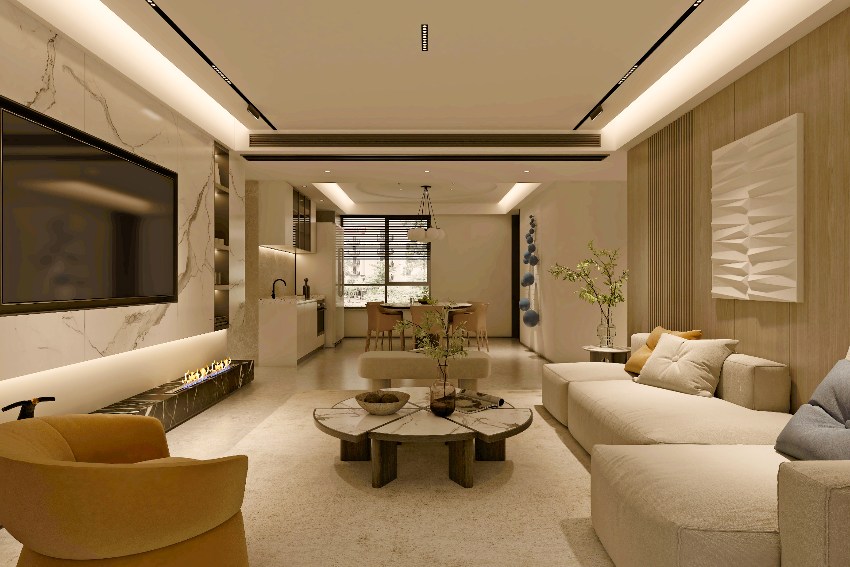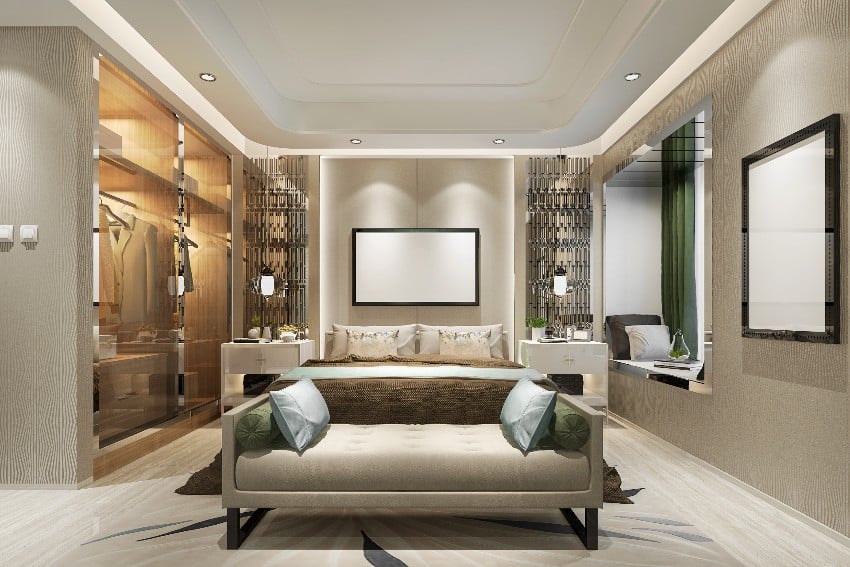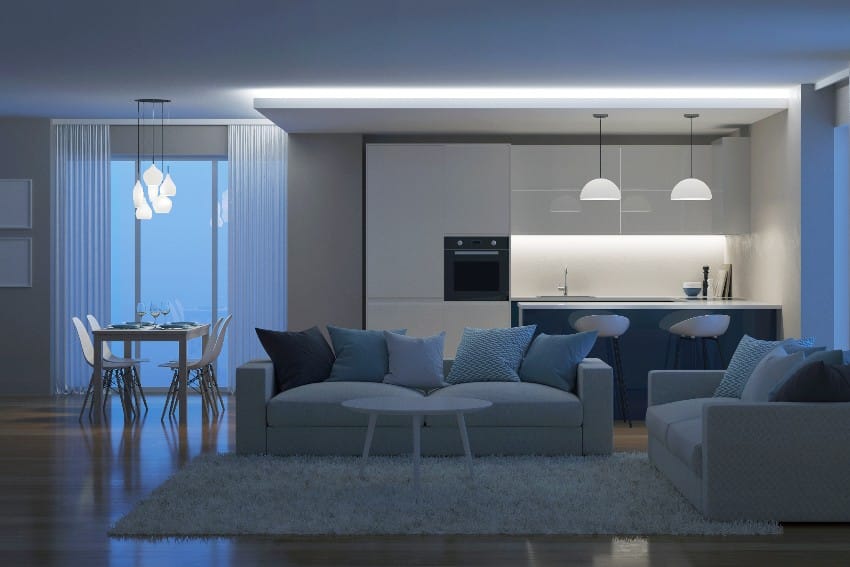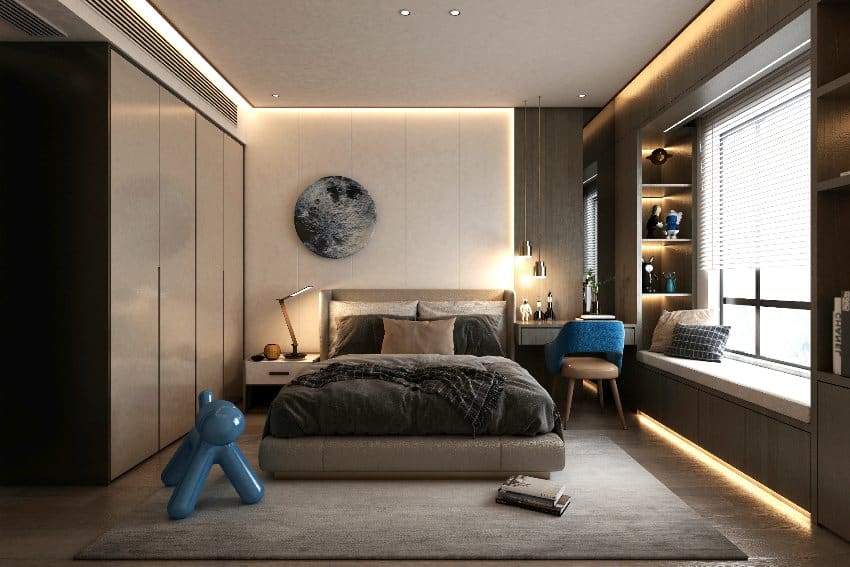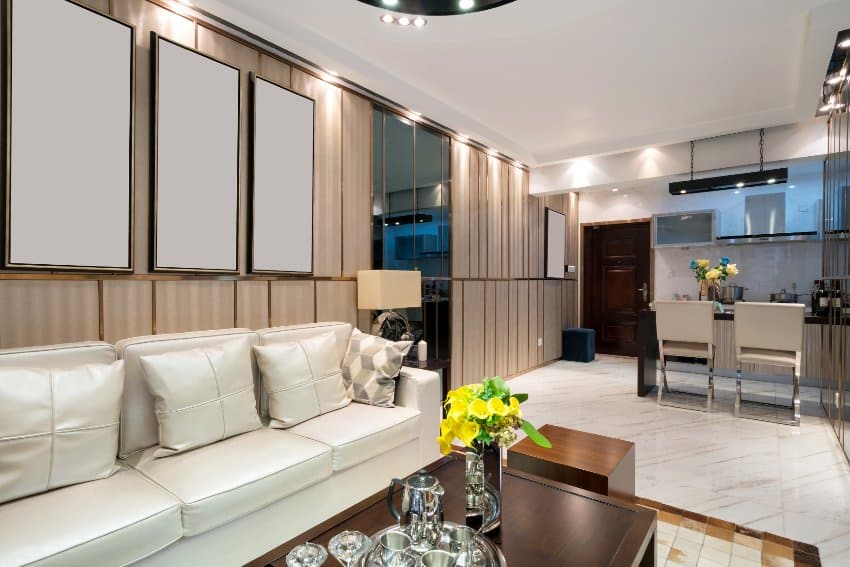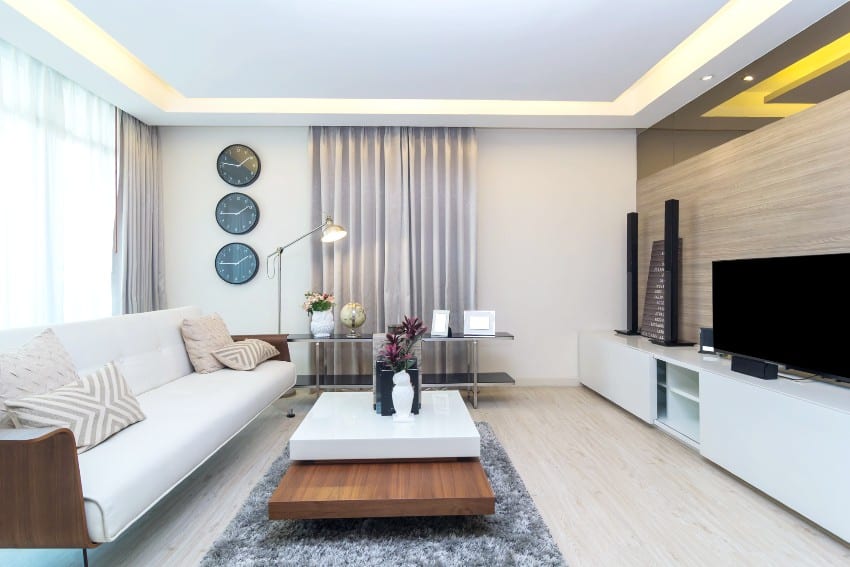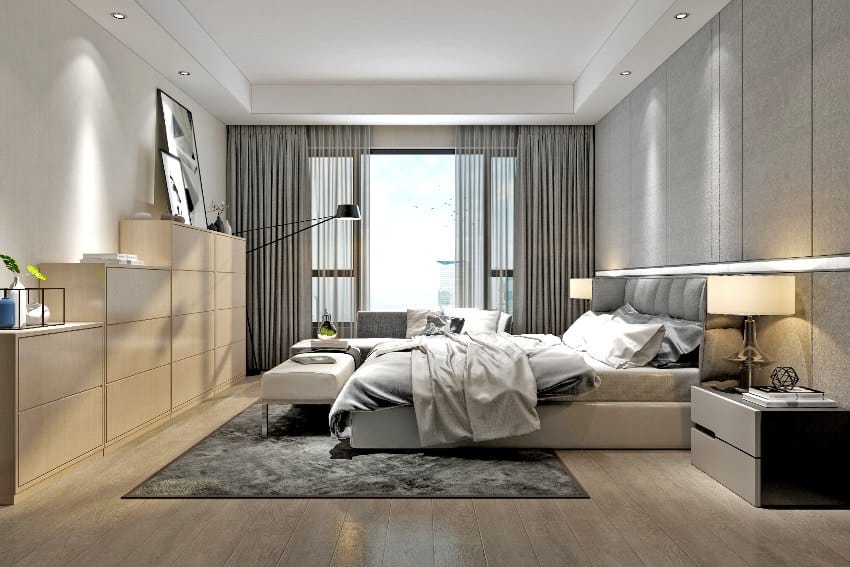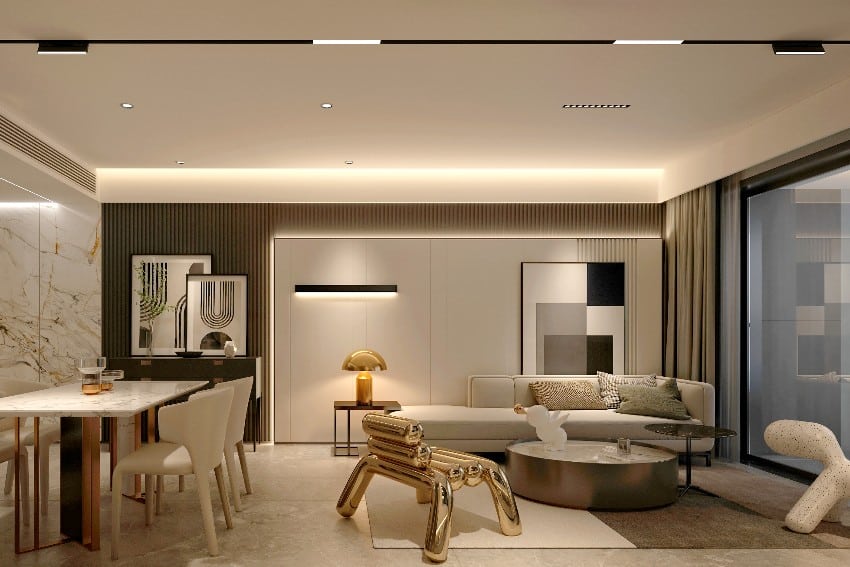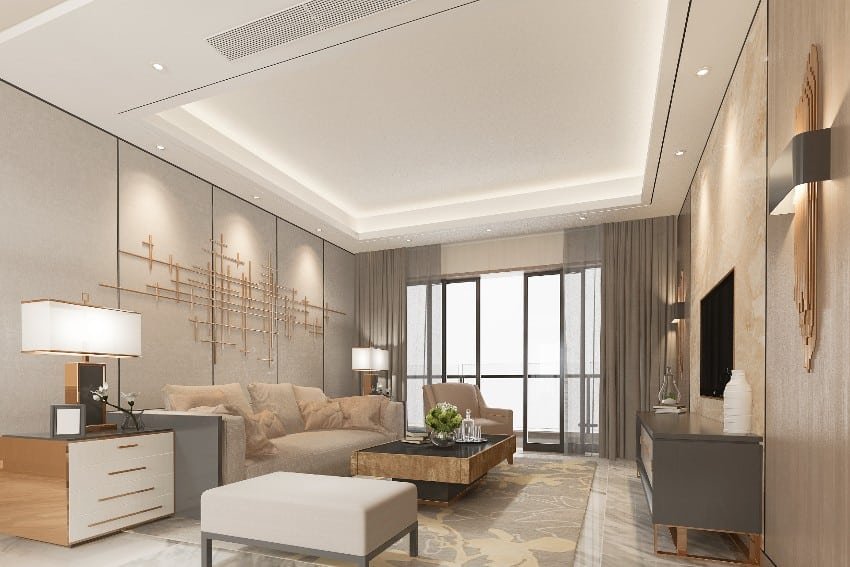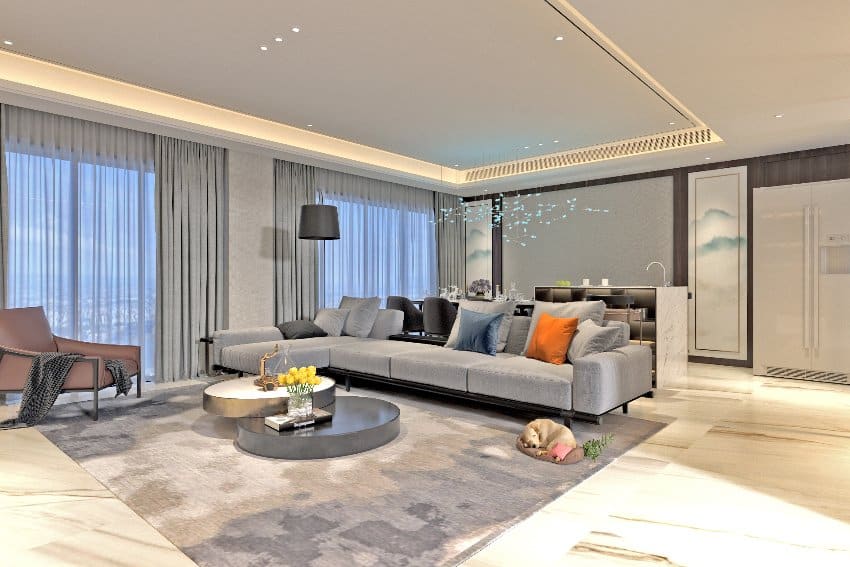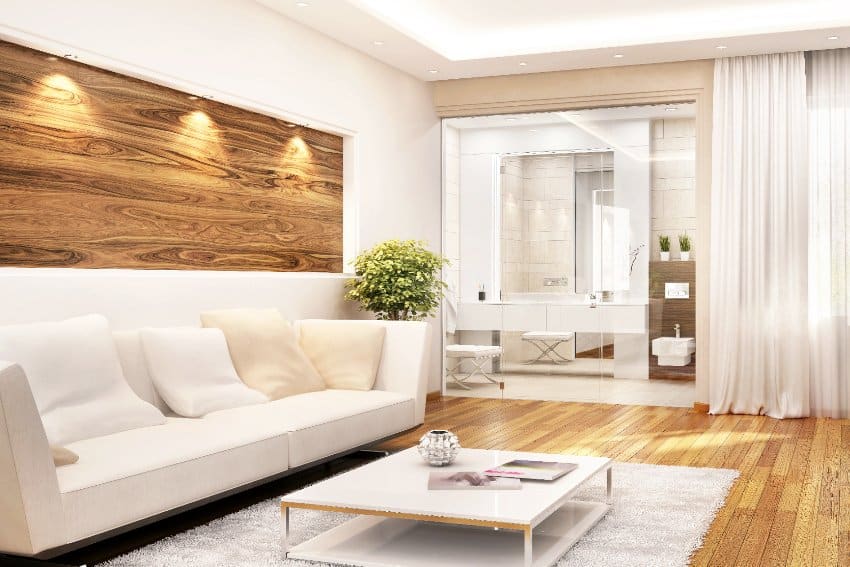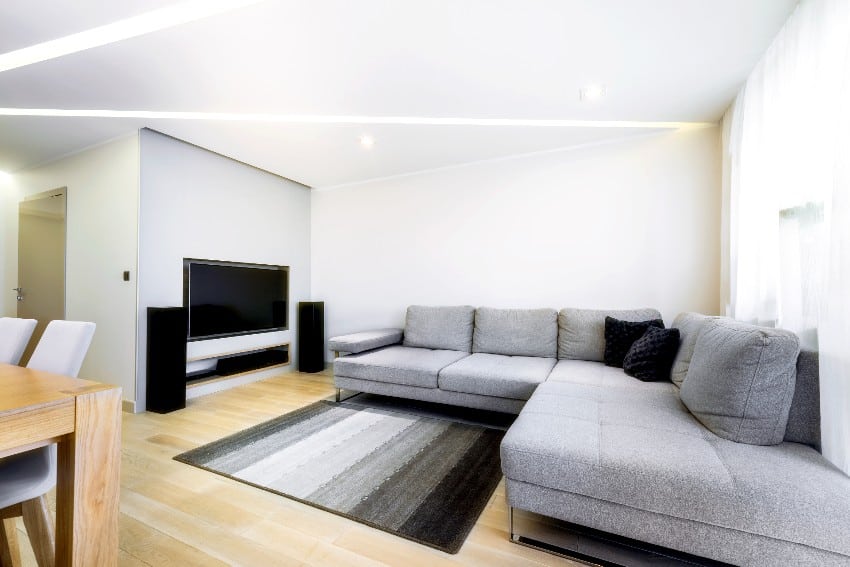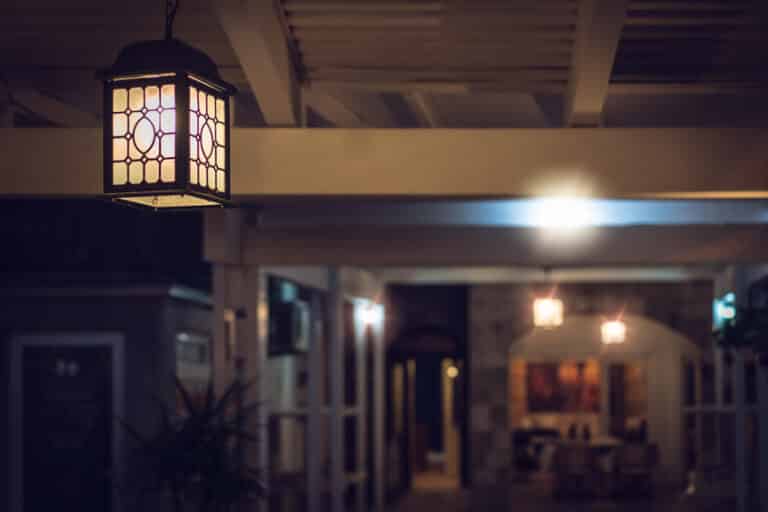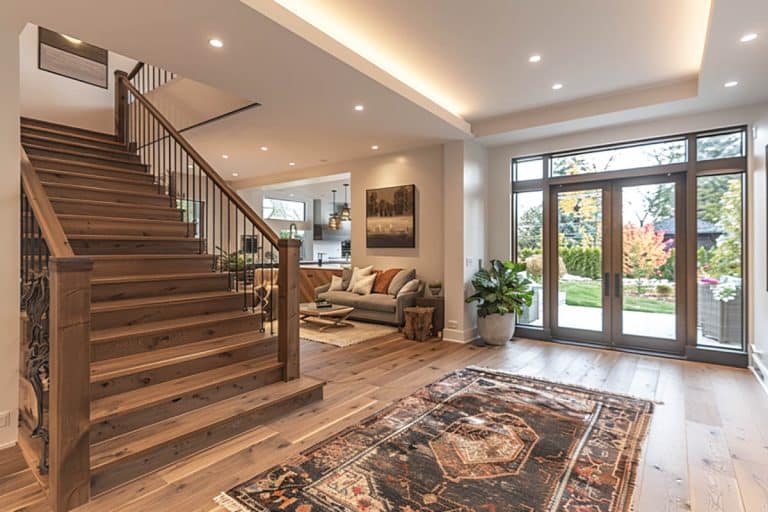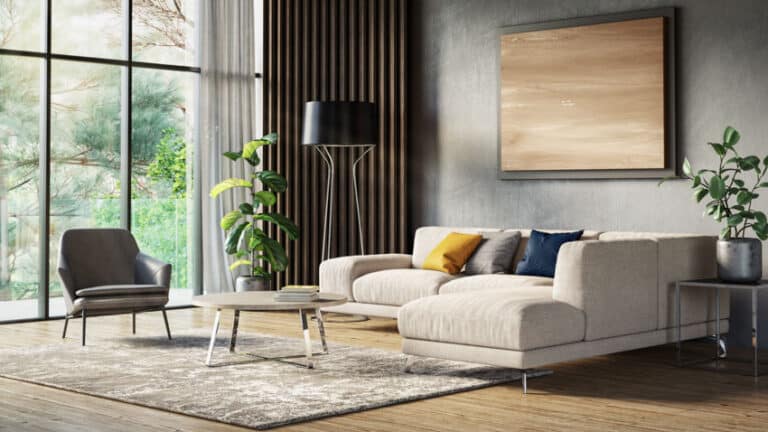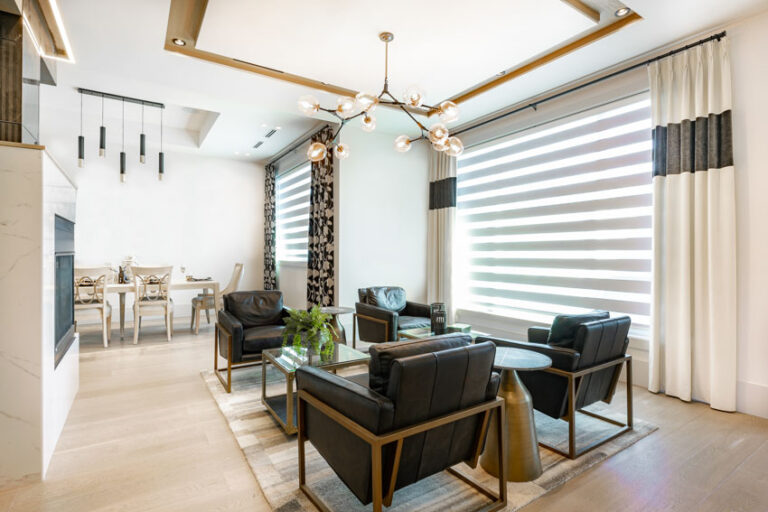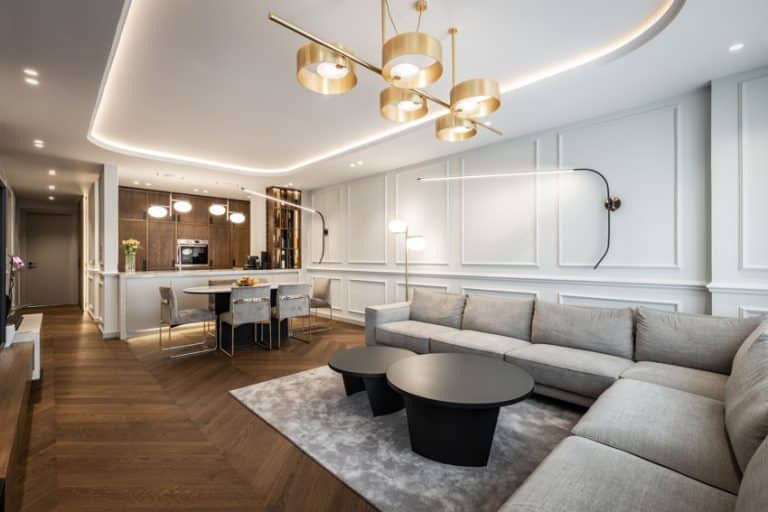Valance Lighting (Benefits & Designs)
These valance lighting designs share what it is, its benefits, types of lighting fixtures, and differences between cove, soffit, and valance lights.
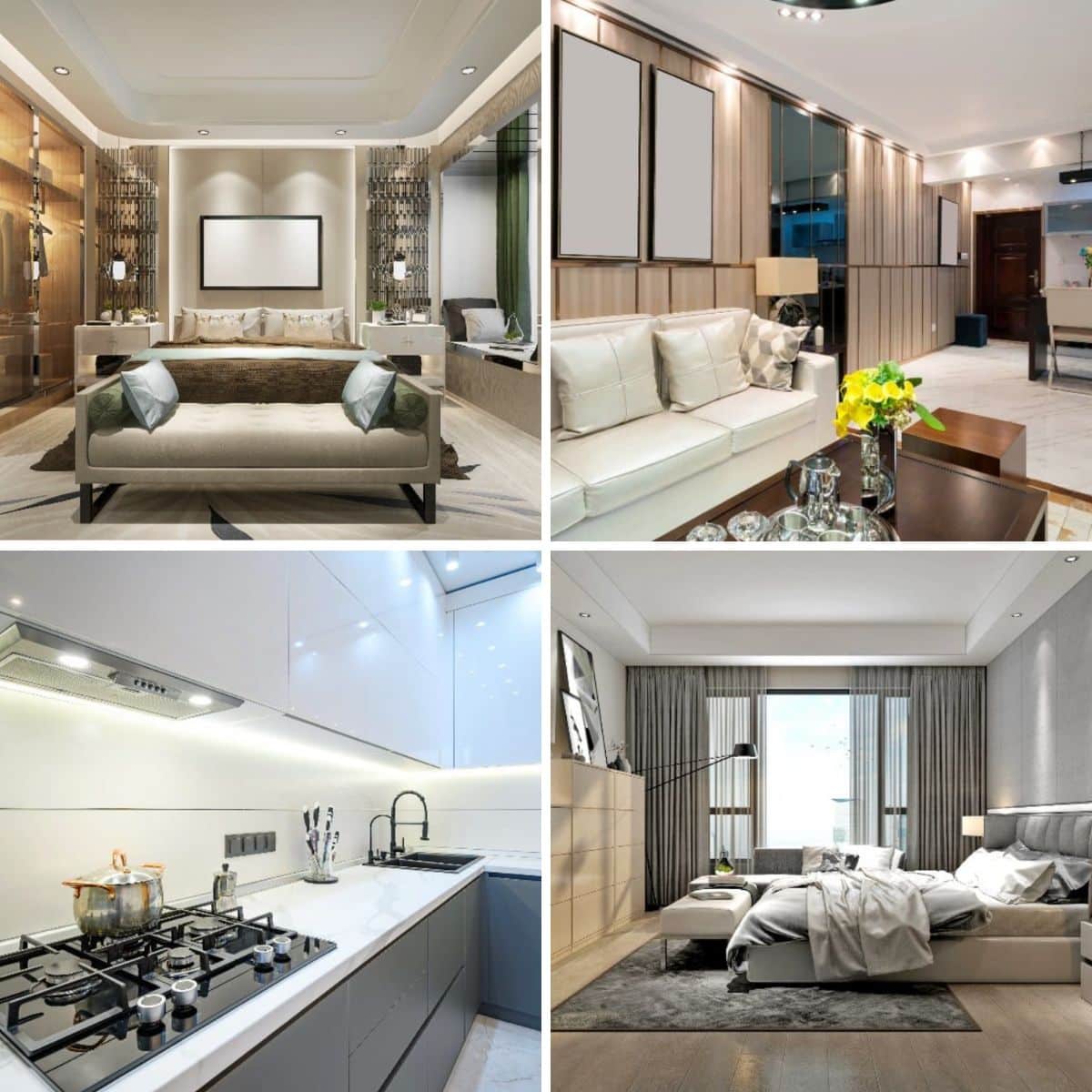
There are many ways to bring light into a home. It can range from integrated architectural solutions that call for contractors and tradespeople to decorative lamps that need to be on a table and plugged into the nearest outlet.
There are a lot of different alternatives. Even though some fixtures are usually associated with a specific layer of lighting, most fixtures are adaptable enough to be utilized in various ways.
An interior design’s success or failure often depends on the quality of its design. It can assist in the production of an atmosphere, the navigation of space, adding height or depth to a structure, and enhancing functional capabilities.
Suppose you are redesigning your bedrooms, kitchen, or living room in the house. In that case, this is a great option to consider. It’s aesthetic and unique and definitely has something to bring to the table at the end of the day.
What Are Valance Light Fixtures?
This style is one of the most common architectural lighting options available. It’s the option directly integrated into the structure of the space you’re designing.
It is a form of indirect illumination, which is a method that involves reflecting light off of surfaces such as walls and ceilings. Many professionals prefer this method since it reduces the amount of glare and shadows cast. The most common function of architectural lights is to provide ambient lighting.
The light from valance fixtures bounces in both upward and downward directions. It is because a horizontal shield made of wood, metal, or glass is hung either high up on the wall, or directly over a window containing it.
The living room, the bedroom, and the kitchen are all great places to install these fixtures. When illuminating certain activities, such as reading in bed, consider putting the valance at a lower height.
Wall washing works with the valance light’s downlight, providing an excellent option for mounting over curtains. In most cases, it applies to areas of interest on top of serving as a highlighter for the home’s exterior.
These lights, which illuminate in all directions, is excellent for drawing attention to a specific area, either within or beyond the confines of the space. You can occasionally use it to make an area with contrasting light and shadows.
Valance Overhead Light Benefits
Think about the numerous motives that could lead you to install systems throughout the interiors of your home. You can improve a location’s visibility and security with the help of these lights for both family and guests.
Cove, cornice, and valance lighting techniques are usually designed as part of the interior architecture and become important parts of the form of the space. – Building Systems for Interior Designers, Corky Binggeli
Lighting affects not only the beauty of a space but also the feelings of the people in that space. The importance of adequate illumination extends not only to the interiors of buildings but also to their exteriors.
The advantages of architectural lighting, when combined with the benefits of natural light and other electrical forms, can completely transform your area.
These types of light fixtures are also durable and long-lasting. They have a low-profile appearance that is ideal for illuminating along a wall and creating a warm inviting ambiance.
Improved appearance
It is intrinsically collaborative and complimentary, unlike task fxixtures, which is restrictive. In ways that are not possible with other kinds of lighting, the light interacts with the characteristics of the building’s architecture.
How light interacts with different textures, colors, and spatial boundaries has the potential to directly and subtly accentuate certain aspects of the environment. Light can alter people’s responses to and experiences within a space. It does this by contributing to the overall beauty of the architecture.
Better visibility
It should be no surprise that the primary purpose served by any source of light is to enlighten a region so that you can see it. Have you thought about how important it is for certain areas of your home to be seen? You may easily map out distinct regions in your home, even if there are no physical separators.
You can do this by using the visibility afforded by these lights in your architecture. Depending on how you arrange it, this may be helpful in making small spaces appear more spacious and making large areas feel more intimate.
Added safety
Enhancing visibility by providing sufficient illumination in both interior and external places can contribute to an increase in safety in a variety of different ways.
Incorporating the correct quantity of light into the space will make it simpler to see what’s going on there, even if an excessive amount of the wrong illumination source is disruptive.
Individuals can travel and perform their jobs in an environment with a higher level of safety with this style installed. It can also add an aspect of visibility.
An extra layer of security
It is possible to discourage others from trespassing on your property by increasing the area’s visibility to a sufficient degree. Installing these lights with motion sensors during the evening will notify you immediately if there is an intruder in your home.
Different Wall and Ceiling Valance Fixtures
Here are the different wall and ceiling fixtures often used for interior design.
Valance Light
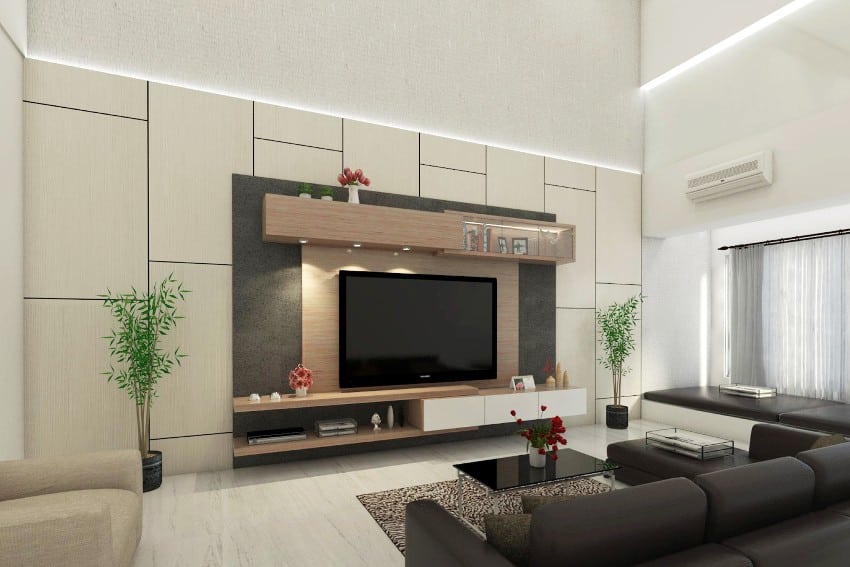
Valance light fixtures should only be used on ceilings that are at least 8 feet high. they are frequently installed in kitchens, living rooms and bedrooms with great results. They can also be used for cathedral or vaulted ceilings.
Under-cabinet valance lighting
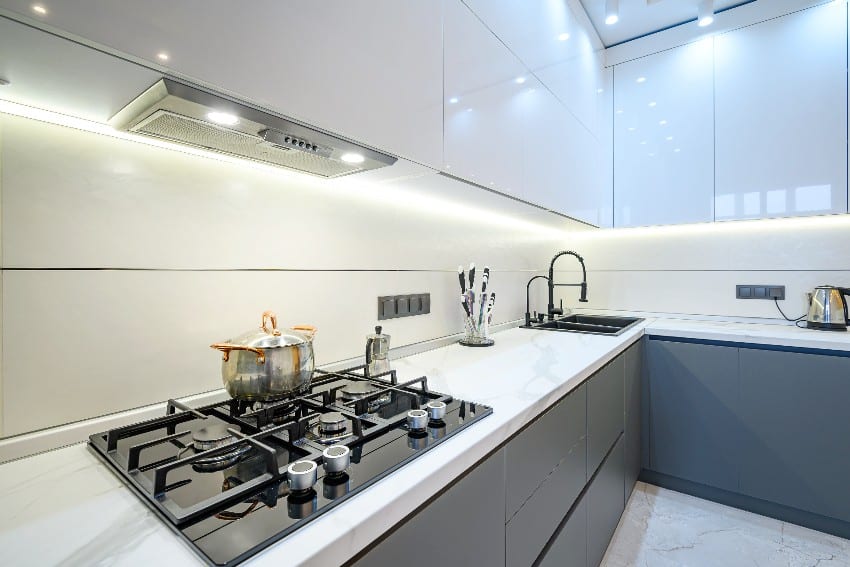
Cove ceiling lights
This kind of fixture is attached to the ceiling so that the light bulb isn’t visible behind a glass or plastic shade. Nearly a century ago, ceiling fixtures became popular in residential construction.
Today, cove lights frequently serve as the sole source of ambient light in a given space. See more types of ceiling lights here.
Other Popular Types of Lighting
Here are a few of the other types of light fixtures that complement these fixtures.
Recessed
Recessed fixtures are mounted directly on the ceiling and have an opening that is flush with the surface of the ceiling. A recessed light needs a clearance of at least 6 inches above the ceiling, and insulation is vital to ensure that dampness doesn’t drip into the fixture.
It is possible to employ recessed lighting to provide ambient, task, or accent lights because it emits a relatively narrow band of light in one direction.
Track lights
Track lighting consists of a linear housing mounted to the ceiling or suspended from it and contains numerous heads. These heads may be positioned anywhere along the track, and you can adjust the direction they face. Task and accent lighting are two typical applications for track lighting.
Sconces
Sconces are light fixtures that are surface-mounted to a wall and can focus light either upwards or downwards. The covers or shades of sconces can also lend a stylish touch to a room. You can use wall sconces to create either general or task illumination.
Valance, Cove & Soffit Lighting Comparison
The following are the differences between cove, soffit, and valance lighting:
Cove Lights
Coves focus light upward and use the ceiling as a reflector to diffuse it. Consider cove light fixtures for rooms with vaulted or cathedral ceilings or low ceilings to open up the space. Accentuate ceilings with coves to prevent hot spots or excessive brightness.
Situate the cove 6 feet and 8 inches from the floor and then 18 inches from the ceiling. Simple fluorescent bulb holders can be put on top of upper wall cabinets in kitchens without soffit enclosures and hidden with trim.
It provides ambient illumination for the kitchen, and task lights can augment it. The cove shielding board should obscure the lamp while letting it illuminate the ceiling directly to reduce glare.
Soffit Lights
Soffits, or cornices, guide light downward architecturally. It allows you to light walls, drapes, and murals dramatically. Soffit lights gives wood, brick, and stucco a grazing effect. You can fit soffits into cabinetry in kitchens and bathrooms where you need light on certain surfaces.
Valance Ceiling Lighting
Valances can direct light upward or downward and should have linear fluorescent lamps. It also works with 8-foot ceilings, including vaulted and cathedral. Living areas, bedrooms, and kitchens benefit from these lights.
Lower valance mounting heights are ideal for reading in bed. A valance light’s downlight can be used to wall-wash and above drapes. Window and door height determine the mounting height. Consider matching the valance height to 6’8″ doors and windows. Valances can be wall-mounted.
Why Consider Valance Top-Mounted Lighting
The way you illuminate your interior has a significant effect on the people who take in its appearance. Light systems, whether interior or exterior, can achieve a wide variety of objectives, particularly when architectural lights effects are incorporated well into the design.
Architectural lighting should be considered an indispensable element of your home’s interior and external lighting systems. The use of artificial lighting effects can have a significant influence on these areas by improving their aesthetics, providing mood lighting, as well as their security and visibility.
You can completely redesign your space by installing an architectural light system such as a valance fixture that is effective, practical, and aesthetically beautiful.
Visit our guide romantic bedroom lighting tips for more light fixture ideas.

